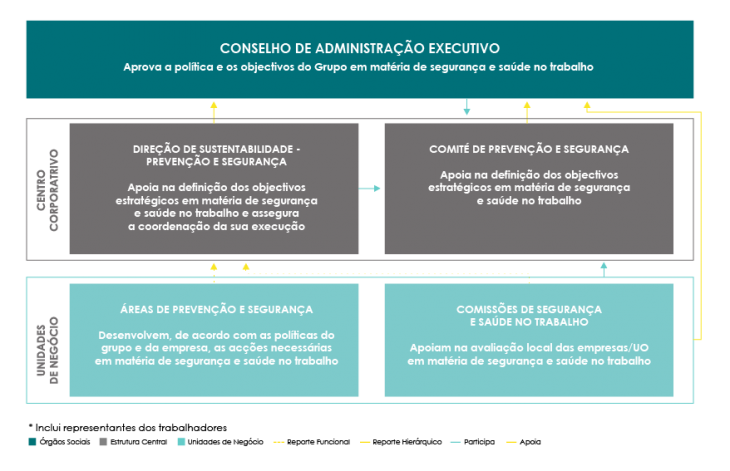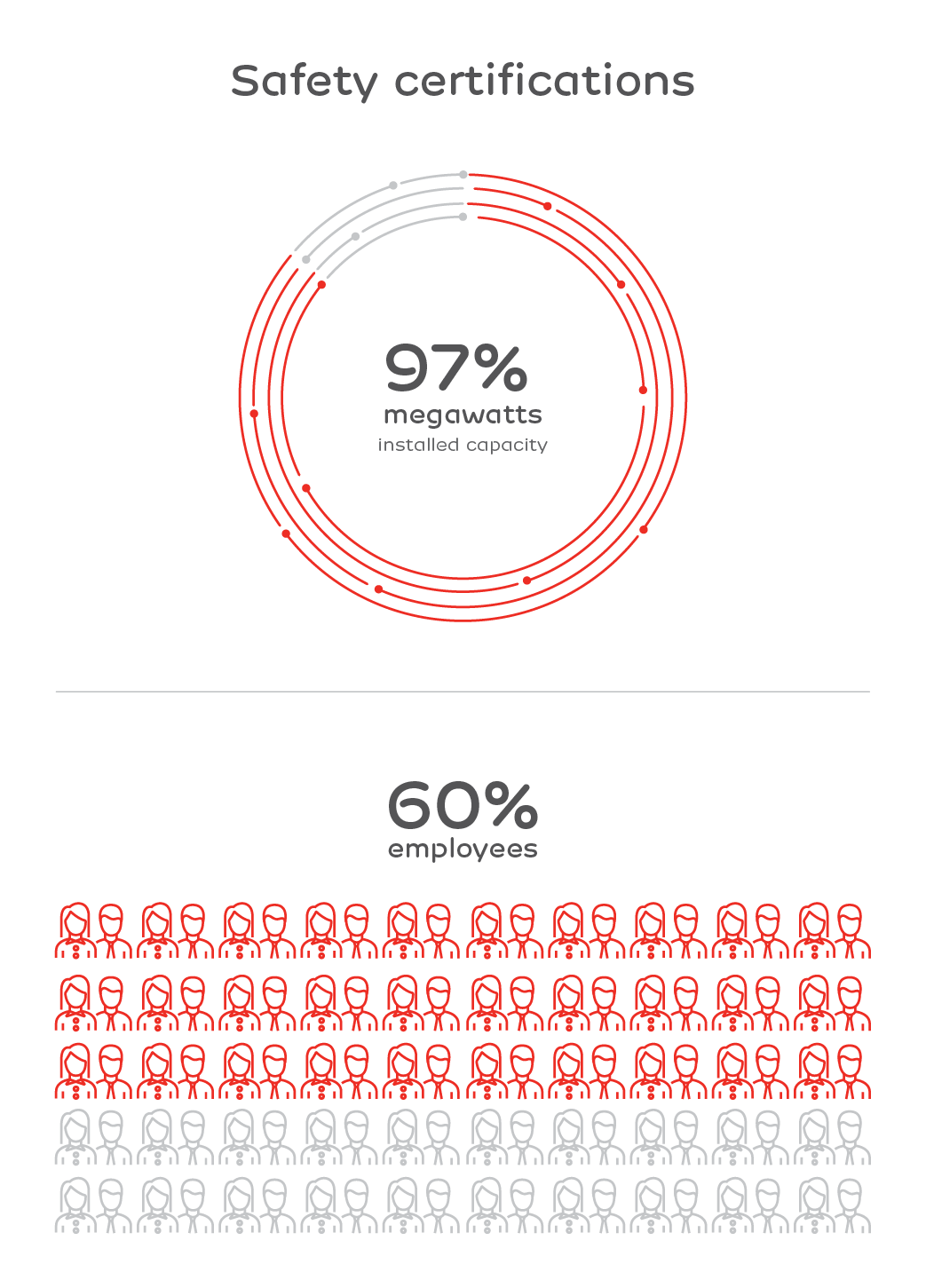At EDP, occupational health and safety (OH&S) are built with the everyone’s commitment and participation.
Occupational safety and health are critical values for the sustainable development of the EDP Group. The importance that EDP gives to this issue goes well beyond mere compliance with legal requirements. It is spelled out in our occupational safety and health policy, which focuses on the strategic goal of “Zero accidents, no personal harm”, and it applies to our entire corporate universe in the different countries where we operate.
The OH&S goals are set by the EDP Group and by each particular company, with the purpose of controlling the risk of occupational accidents and professional diseases, as well as of maintaining or obtaining the OHSAS 18001 certification for each particular safety management system.
It is therefore our intention to pursue and consolidate a positive safety culture, with the participation and involvement of all employees, service providers and suppliers, promoting it among local communities and all stakeholders who may be affected by the normal course of our activities.
Organization



The EDP commitment. Safety Policy
The corporate management of the EDP Group is determined to constantly strengthen the culture of Occupational Health and Safety, by developing awareness, deepening willingness and making available the resources required for:
- Ensuring a safe and healthy work environment guaranteed to prevent adverse health effects;
- Ensuring compliance with legislation and other requirements voluntarily undertaken by the EDP Group;
- Promoting the training and informing of employees regarding activity-related risks, raising their awareness of compliance with safety standards and procedures;
- Protecting facilities and equipment by adopting the best techniques, combined with monitoring and updating operating procedures in order to eliminate or minimize risks to employees, Contractors and stakeholders who might come into contact with the EDP Group’s infrastructures.
- Ensuring the participation and consultation of workers and their representatives in planning, implementing and evaluating the performance of Occupational Health and Safety management.
Safety is an integral part of the quality of the services and products of EDP Group companies.
OH&S Management System
To better manage the strategic objectives of the Occupational Health and Safety Policy, EDP has adopted a Corporate Safety Management System (CSMS) which follows recommendation ILO-OSH 2001 of the International Labor Organization, and the model provided by reference standard OHSAS 18001:2007, reinforcing the principle that Occupational Health and Safety issues are managed according to common, transversal criteria within the EDP Group companies.
Locally, each company adopts the Corporate Management System directly or uses it as a reference to develop its own safety management system, specific to or integrated into the areas of environment and/or quality, depending on its activity.



Data correspond to 2019.
EDP’s Corporate Safety Management System is certified by Lloyd´s Register since 2013.
The results regarding EDP’s main OH&S indicators reflect the outcomes of actions and initiatives throughout the year to improve workplace safety conditions, in particular in the areas of training and awareness raising, risk assessment and control, preventive action with employees of service providers and an increase in the audits and inspections programme.
An accident at work is defined as an unforeseen event that that results in a fatality, permanent disability or time lost from work occurred at the time and place of work, or path. This includes cases such as intoxication and the resulting acts caused by third parties, even outside the company's premises, when occurring in the working time.
Accidents at work: those occurring in place and working time or path, where the employee is directly or indirectly under the control of the Company;
Commuting accidents (in itinere): A commuting accident is defined as an accident which occurs during the normal journey between the home, the place of work and the usual place where meals are taken. As for on-duty accidents, all cases of commuting accidents leading to an absence of more than one calendar day from work or the death of the victim are covered. Nevertheless, data on commuting accidents is not included in data on on-duty accidents. They are always presented separately.
Number of accidents (lost-time injuries): According to the resolution of the 16th ILO Conference, the work accident statistics refer only to accidents at work. The statistics of commuting accidents should be presented separately from accidents at work.
Worked hours: Total of effectively hours worked in normal periods plus total of hours considered as overtime work in the reference period. It also includes the time spent with training actions and occupational health services.
Time lost due to occupational injuries (days lost): Sum of the number of days lost (calendar days) resulting from work accidents in the reference period, plus the number of days lost due to accidents in the previous period, which lasted for rolling reference period.
Accident rates are calculated on base of work accidents that cause absence (lost-time injuries) of more than one calendar day, excluding the day of the accident.
Frequency Rate (FR) or (LTIFR): Lost-time injuries per million hours worked in the accounting period.
Severity Rate (SR) or (LTSR): Number of (calendar) days lost due to work accidents per million worked hours in the accounting period.
Total Severity Rate (TSR): Number of (calendar) days lost per million hours worked in the accounting period, considering 6000 days for each fatal accident and the percentage of days for disabilities and impairments.
Incidence Rate (IR) or (LTIIR): Lost-time injuries per thousand workers, in the accounting period.
Average days lost per accident: An average of the number of lost days per lost-time injury.